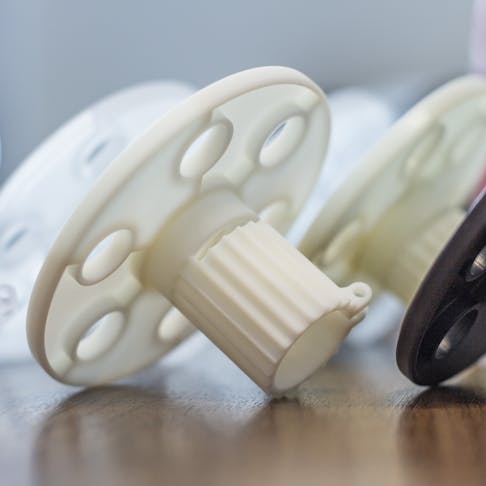Choosing the Right SLA Material by Application
Stereolithography (SLA) offers a diverse range of photopolymer resins, enabling the production of parts with tailored properties. However, this variety necessitates careful material selection based on specific project requirements. Understanding the key performance characteristics and trade-offs among available resins—including those from manufacturers like Stratasys (Somos), 3D Systems (Accura), and the recently added Formlabs—is crucial for successful outcomes.
Key Material Properties and Their Implications
Evaluating SLA resin datasheets requires understanding how listed properties translate to real-world performance:
🧱 Stiffness (Tensile/Flexural Modulus)
A high modulus indicates resistance to bending under load. Materials such as Somos PerFORM and Formlabs Rigid 10K, with moduli approaching 10 GPa, are suitable for applications demanding high rigidity, like tooling or aerodynamic test models. Typically, increased stiffness correlates with reduced elongation.
🛡️ Durability and Toughness (Elongation/Impact Strength)
Applications requiring resistance to impact or cyclic stress benefit from materials with higher elongation at break and impact strength. Resins categorized as "Durable," including Accura Xtreme Grey, Accura Xtreme White 200, Somos Taurus, and the Formlabs Tough series, are formulated for these scenarios. Formlabs Tough 1500 V2, for instance, provides significant elongation suitable for compliant parts or impact-resistant enclosures.
♨️ Thermal Resistance (HDT - Heat Deflection Temperature)
HDT indicates the temperature at which a material begins to deform under a specified load. While many standard resins soften around 50-60°C, high-performance options exist. Formlabs High Temp offers an HDT exceeding 200°C (@ 0.45 MPa), suitable for thermally demanding tests or fixtures. Somos PerFORM and Accura Bluestone (with thermal post-cure) also provide significantly elevated thermal stability.
💎 Clarity
For applications requiring transparency, such as light guides or fluid visualization models, clear resins are necessary. Accura ClearVue, Somos WaterShed XC 11122, Somos WaterClear Ultra 10122, and Formlabs Clear offer various levels of light transmission and clarity.
Material Categories and Application Suitability
Grouping materials by primary characteristics aids selection:
General Purpose
Offering balanced properties, these resins serve well for initial prototypes, form/fit validation, and less demanding functional tests. Examples include Accura 25 (good flexibility), Accura ABS Black (SL 7820) (ABS-like characteristics), and Formlabs Grey/White V5 (smooth finish).

Clear Resins
Chosen for transparency needs. Accura ClearVue and Somos WaterShed XC 11122 are noted for good moisture resistance in addition to clarity. Somos WaterClear Ultra 10122 and Formlabs Clear can provide high optical clarity suitable for lens prototypes or flow models.

Durable and Tough Resins
Designed for functional prototypes or end-use parts requiring impact resistance and resilience. This category includes Accura Xtreme Grey/White, Somos EvoLVe 128 (thermoplastic feel), Somos Taurus (added heat tolerance), and Formlabs Tough 1500/2000.

Highly Stiff / High Temp / Specialty
For demanding requirements beyond standard capabilities. High stiffness is provided by Accura Bluestone, Somos PerFORM, and Formlabs Rigid 10K. High thermal resistance is the key feature of Formlabs High Temp. Specialty needs are met by materials like Formlabs ESD for static-dissipative fixtures.


Conclusion
Effective material selection in SLA printing requires analysis beyond basic properties. Consider the primary performance drivers for the specific application—stiffness, toughness, clarity, thermal resistance, or specialized functions like ESD protection. Datasheets provide essential quantitative data, but understanding the practical implications and potential trade-offs is key. Careful review of material specifications, including post-processing requirements that can influence final properties, ensures optimal prototyping and end-use parts results.
You can review technical datasheets and learn more about SLA materials and the process on our Stereolithography 3D Printing Services page. Ready to start your project? Get an instant quote.

